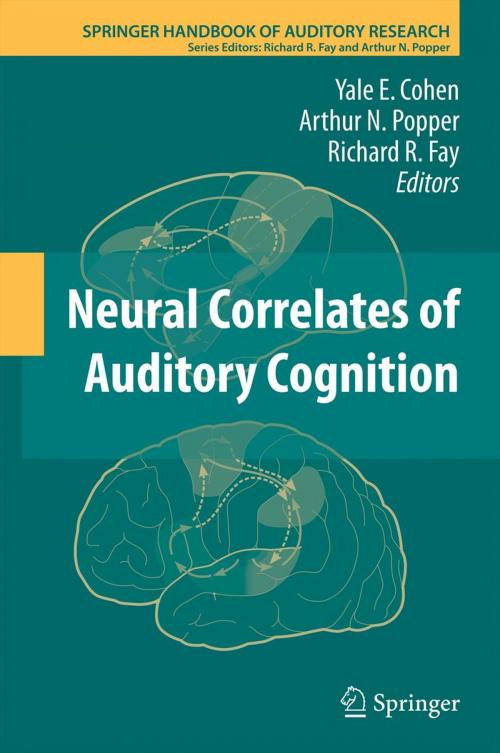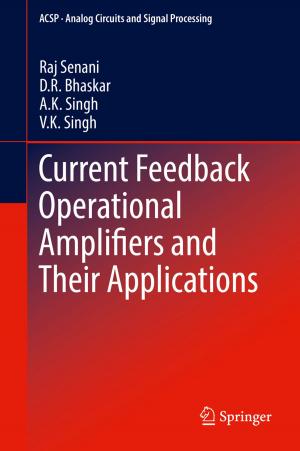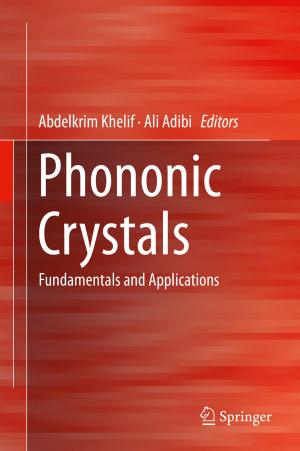Neural Correlates of Auditory Cognition
Nonfiction, Health & Well Being, Medical, Specialties, Otorhinolaryngology, Internal Medicine, Neuroscience| Author: | ISBN: | 9781461423508 | |
| Publisher: | Springer New York | Publication: | October 19, 2012 |
| Imprint: | Springer | Language: | English |
| Author: | |
| ISBN: | 9781461423508 |
| Publisher: | Springer New York |
| Publication: | October 19, 2012 |
| Imprint: | Springer |
| Language: | English |
Hearing and communication present a variety of challenges to the nervous system. To be heard and understood, a communication signal must be transformed from a time-varying acoustic waveform to a perceptual representation to an even more abstract representation that integrates memory stores with semantic/referential information. Finally, this complex, abstract representation must be interpreted to form categorical decisions that guide behavior. Did I hear the stimulus? From where and whom did it come? What does it tell me? How can I use this information to plan an action? All of these issues and questions underlie auditory cognition. Since the early 1990s, there has been a re-birth of studies that test the neural correlates of auditory cognition with a unique emphasis on the use of awake, behaving animals as model. Continuing today, how and where in the brain neural correlates of auditory cognition are formed is an intensive and active area of research. Importantly, our understanding of the role that the cortex plays in hearing has the potential to impact the next generation of cochlear- and brainstem-auditory implants and consequently help those with hearing impairments. Thus, it is timely to produce a volume that brings together this exciting literature on the neural correlates of auditory cognition. This volume compliments and extends many recent SHAR volumes such as Sound Source Localization (2005) Auditory Perception of Sound Sources (2007), and Human Auditory Cortex (2010). For example, in many of these volumes, similar issues are discussed such as auditory-object identification and perception with different emphases: in Auditory Perception of Sound Sources, authors discuss the underlying psychophysics/behavior, whereas in the Human Auditory Cortex, fMRI data are presented. The unique contribution of the proposed volume is that the authors will integrate both of these factors to highlight the neural correlates of cognition/behavior. Moreover, unlike other these other volumes, the neurophysiological data will emphasize the exquisite spatial and temporal resolution of single-neuron [as opposed to more coarse fMRI or MEG data] responses in order to reveal the elegant representations and computations used by the nervous system.
Hearing and communication present a variety of challenges to the nervous system. To be heard and understood, a communication signal must be transformed from a time-varying acoustic waveform to a perceptual representation to an even more abstract representation that integrates memory stores with semantic/referential information. Finally, this complex, abstract representation must be interpreted to form categorical decisions that guide behavior. Did I hear the stimulus? From where and whom did it come? What does it tell me? How can I use this information to plan an action? All of these issues and questions underlie auditory cognition. Since the early 1990s, there has been a re-birth of studies that test the neural correlates of auditory cognition with a unique emphasis on the use of awake, behaving animals as model. Continuing today, how and where in the brain neural correlates of auditory cognition are formed is an intensive and active area of research. Importantly, our understanding of the role that the cortex plays in hearing has the potential to impact the next generation of cochlear- and brainstem-auditory implants and consequently help those with hearing impairments. Thus, it is timely to produce a volume that brings together this exciting literature on the neural correlates of auditory cognition. This volume compliments and extends many recent SHAR volumes such as Sound Source Localization (2005) Auditory Perception of Sound Sources (2007), and Human Auditory Cortex (2010). For example, in many of these volumes, similar issues are discussed such as auditory-object identification and perception with different emphases: in Auditory Perception of Sound Sources, authors discuss the underlying psychophysics/behavior, whereas in the Human Auditory Cortex, fMRI data are presented. The unique contribution of the proposed volume is that the authors will integrate both of these factors to highlight the neural correlates of cognition/behavior. Moreover, unlike other these other volumes, the neurophysiological data will emphasize the exquisite spatial and temporal resolution of single-neuron [as opposed to more coarse fMRI or MEG data] responses in order to reveal the elegant representations and computations used by the nervous system.















